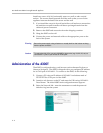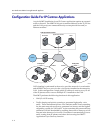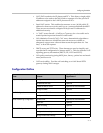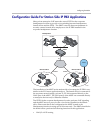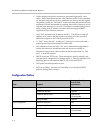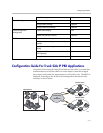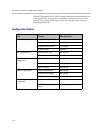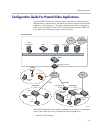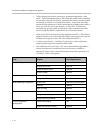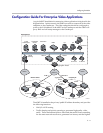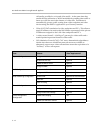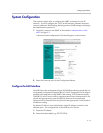
User Guide V
2
IU 4300T Converged Network Appliance
3 - 6
• Traffic shaping and priority queuing to guarantee high quality voice
traffic. These mechanisms protect voice and data traffic from contending
for the same network resources to guarantee low latency and the highest
call quality possible for VoIP traffic. At the same time they ensure the best
utilization of WAN bandwidth by enabling data traffic to burst up to full
line rate in the absence of voice calls. Precedence is automatically given to
traffic coming from IP phones and other devices using the 4300T’s
Application Layer Gateway function.
• NAT/PAT translation for IP phones and PC’s. This allows a single IP
address to be used on the WAN link to represent all of the private IP
addresses assigned to the LAN IP phones and PC’s.
• A “VoIP” aware firewall. A full layer 7 gateway for voice traffic and a
stateful packet inspection firewall for data traffic.
• Call Admission Control (CAC). CAC uses a deterministic algorithm to
decide when there are insufficient network resources available to
adequately support new calls and then return the equivalent of a “fast
busy” to new call requests.
• DHCP server and TFTP relay. These features are used to simplify and
expedite the IP configuration of phones and PC’s. This also includes VoIP
signaling gateway information (MGCP, SIP, H.323 and SCCP).
• Call quality monitoring and test tools.
• VoIP survivability. Provides call switching to an LAN based PSTN
gateway during WAN outages.
Configuration Outline
Task Subtask
Configure For Station
Side IP PBX
Application?
System Configuration configure LAN/WAN interface Yes
set ethernet link rate Optional
enable the DHCP server Optional but
recommended
configure SNMP Optional
VoIP Configuration enable the VoIP ALG Yes
configure a VoIP subnet route Optional
Data Networking Configuration dynamic NAT Optional but
recommended
static NAT Optional



